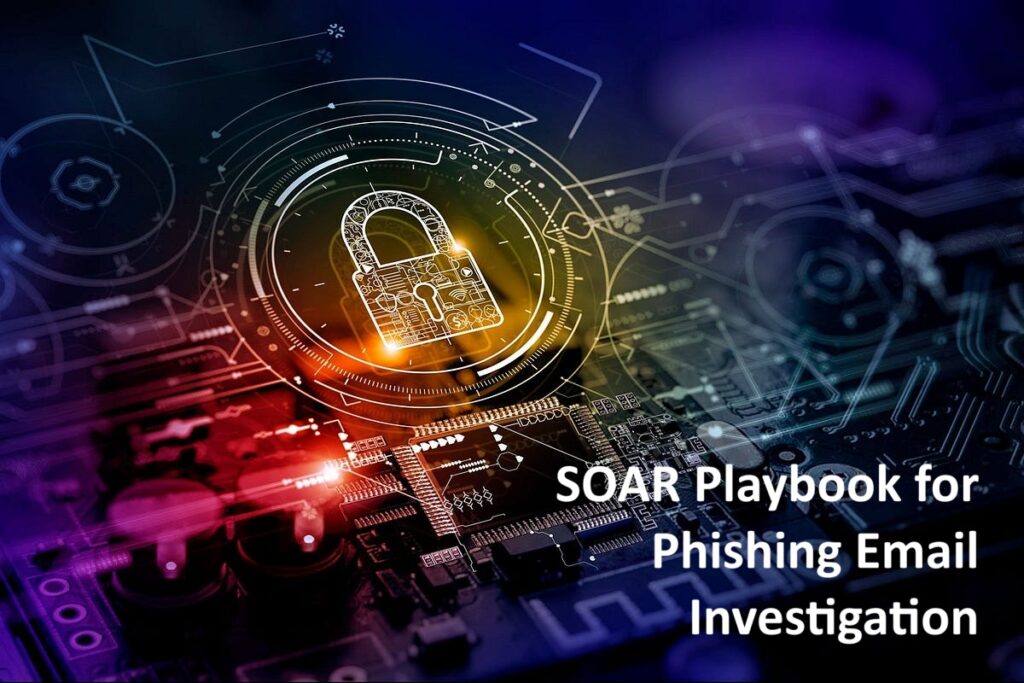
Status: Final Blueprint
Author: Shahab Al Yamin Chawdhury
Organization: Principal Architect & Consultant Group
Research Date: April 19, 2025
Location: Dhaka, Bangladesh
Version: 1.0
I. Executive Summary
The escalating threat of phishing demands a transformative approach to cybersecurity. This “SOAR Playbook for Phishing Email Investigation” leverages Security Orchestration, Automation, and Response (SOAR) to convert reactive security operations into a proactive, efficient, and scalable defense. By automating repetitive tasks and orchestrating complex workflows, SOAR drastically reduces Mean Time to Detect (MTTD) and Mean Time to Respond (MTTR) for phishing incidents, often to mere minutes. This blueprint enhances operational efficiency by freeing analysts for high-value tasks, improves security posture through consistent responses, streamlines compliance, and delivers measurable ROI by reducing operational costs and breach impact.
II. Introduction to SOAR and its Strategic Role
SOAR unifies security Orchestration, Automation, and Response to enhance security operations.
- Orchestration integrates disparate security tools, enabling centralized management and seamless data exchange.
- Automation programs tasks to execute autonomously via “playbooks,” handling alerts, triaging incidents, and containing threats in seconds.
- Response leverages orchestration and automation for rapid threat mitigation.
SOAR addresses critical challenges like alert fatigue, the cybersecurity skills shortage, and the need for faster incident response. It boosts efficiency, optimizes costs, and improves overall security posture by providing superior visibility and consistent, policy-driven actions.
III. Understanding the Phishing Threat Landscape
Phishing attacks rely on deception, often using social engineering, unusual sender addresses, malicious links/attachments, and linguistic errors. Key Indicators of Compromise (IOCs) from successful attacks include abnormal network traffic, unusual authentication activity, and suspicious system changes. A thorough impact and risk assessment determines the scope of attack, victim interaction, potential data exfiltration, and critical asset compromise, informing prioritization and immediate mitigation steps.
IV. Foundational Frameworks for SOAR-Driven Incident Response
Effective SOAR aligns with established frameworks like NIST (SP 800-61) and SANS (PICERL), operationalizing their phases:
- Preparation: Proactive measures like training, policy development, and tool readiness.
- Detection & Analysis: Rapid identification and understanding of incident scope.
- Containment, Eradication & Recovery: Limiting spread, removing threats, and restoring systems.
- Post-Incident Activity: Lessons learned and process improvement.
SOAR playbooks are the operational blueprints, defining triggers, process steps, actions, inputs, interactions, and outcomes. Best practices include modular design, focusing on repetitive tasks, and incorporating
Human-in-the-Loop (HITL) for critical decisions.
V. The SOAR Playbook for Phishing Email Investigation: Detailed Workflow
This playbook integrates automated tasks and human intervention across the incident response lifecycle:
- Preparation & Proactive Measures:
- Automated: Threat intelligence ingestion, automated vulnerability scanning, user training enrollment.
- Human: Define roles, review procedures, conduct awareness campaigns, establish third-party contracts.
- Detection & Initial Triage:
- Automated: Alert generation from SIEM/Email Security Gateway, IOC extraction and enrichment (e.g., VirusTotal), identifying all recipients, checking abuse mailbox.
- Human: Formal incident reporting, initial investigation, validation of incident type and priority.
- Analysis & Deep Investigation:
- Automated: User behavior analysis (SIEM/EDR), network traffic anomaly checks, phishing link content analysis, evidence collection.
- Human: Scope analysis, data compromise identification, forensic investigation decision, remediation plan development, escalation to Tier 2.
- Containment & Eradication:
- Automated: Quarantine/delete malicious emails, block sender/domain, temporary account lock, block URLs/domains, isolate affected systems, ban file hashes.
- Human: Confirm impacted systems, oversee automated actions, approve disruptive actions, reset compromised credentials.
- Recovery & Post-Incident Activities:
- Automated: Initiate host scans, send user notifications, automated password resets, system restoration from backups.
- Human: Prioritize system recovery, conduct vulnerability scanning, reintegrate systems, establish continuous monitoring.
- Automated: Generate incident reports, update playbooks based on lessons learned, track KPIs.
- Human: Formal “lessons identified” process, root cause analysis, internal/external communications, staff welfare review.
VI. Data Management, Governance, and Compliance in SOAR
SOAR handles critical data (email metadata, threat intelligence, user/asset data, logs) through collection, aggregation, normalization, enrichment, analysis, storage, and retention.
- Data Privacy: SOAR supports granular access control and can integrate with solutions for data anonymization and redaction (e.g., PII, PHI). It also manages data retention policies to meet compliance and reduce litigation risk.
- Regulatory Compliance: SOAR significantly aids compliance with GDPR (automated breach notification, auditable records ),
HIPAA (timely detection/mitigation of PHI breaches, documentation ), and
PCI DSS (real-time analysis, incident response plan fulfillment, improved documentation ).
VII. SOAR Platform Capabilities, Integration, and Operationalization
Leading SOAR platforms offer automated playbooks, deep integration, case management, threat intelligence, reporting, and AI/ML support. Seamless integration with
SIEM (for alert ingestion and context ),
EDR (for endpoint response ), and
TIP (for data enrichment and contextual decision-making ) is crucial. Technical requirements include robust system configurations, scalability, and high availability. Operationalization demands skilled staff (DevSecOps), clear SOPs, and continuous maintenance. Monitoring, observability, and performance management (using KPIs like MTTD/MTTR) are vital for continuous optimization.
VIII. Measuring Success: ROI, Maturity, and Continuous Improvement
SOAR delivers substantial ROI through:
- Financial Savings: Reduced operational costs, lower security cost per employee, and decreased breach costs.
- Efficiency Gains: Faster incident response (70-95% reduction in MTTR), increased analyst productivity (up to 50%), and significant reduction in false positives (up to 85%).
- Risk Mitigation: Lower breach costs and enhanced security posture.
SOAR adoption progresses through maturity stages (basic automation to proactive security). A strategic roadmap guides this evolution, emphasizing continuous optimization through regular playbook reviews, performance monitoring, and adaptation to new threats.
IX. Conclusion and Future Outlook
SOAR fundamentally redefines incident response from reactive to proactive, automating and orchestrating defenses against phishing. Its success hinges on holistic organizational transformation, data quality, and strategic human-in-the-loop integration. SOAR is a powerful enabler of compliance and risk management, providing measurable value. The future of SOAR points towards enhanced AI/ML integration, proactive remediation, and broader enterprise integration, leading to increasingly adaptive and autonomous security operations.
Chat for Professional Consultancy Services
